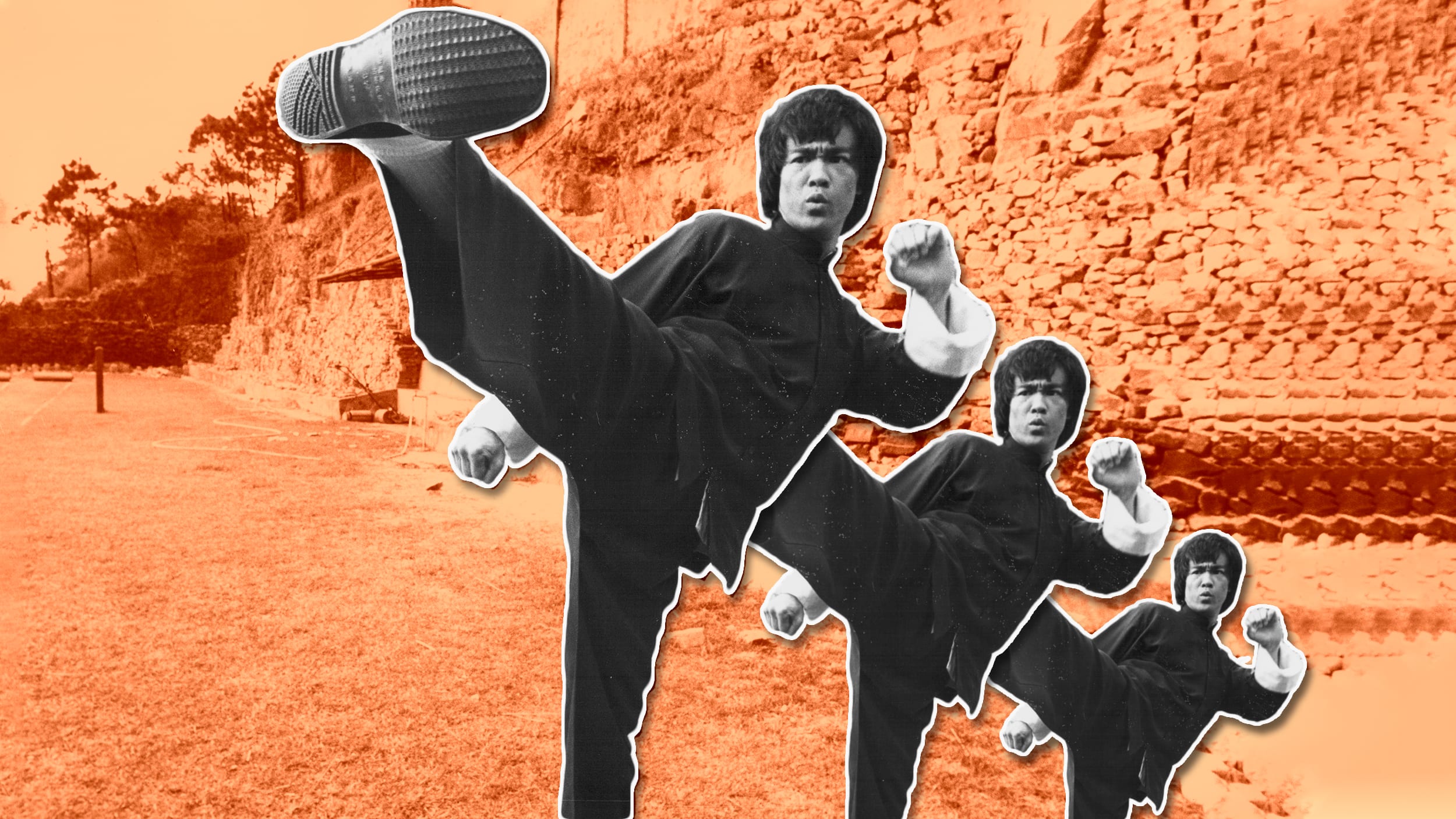New Year’s resolution for 2022: Five ways to have better conversations

- The challenges of the previous years have required difficult conversations.
- When productive, such conversations create learning opportunities and may reveal compromises to seemingly intractable problems.
- To have better conversations, we must shift our focus from winning arguments to acknowledging our blind spots and building relationships.
The past few years have initiated many challenging conversations. We’ve sparred with loved ones over how to live during these difficult times. Businesses have struggled to communicate plans against a mutable compliance landscape. Communities have fractured along the fault lines of hot-button issues. And these don’t even touch the smoldering discourse crater that is the social media landscape.
If we want things to get better — whether in our personal lives or how we do business or think about politics — we need to make a change next year.
What if instead of those routine resolutions that people always declare yet rarely accomplish, you tried something different? What if you made your New Year’s resolution to have better conversations?
It sounds simple enough until you recall that conversations aren’t just the words you use and how you use them. Conversing well demands a suite of interpersonal skills that do more than fill empty air with your thoughts. It’s about building relationships.
After all, if you can’t converse with someone, you can’t connect with them. And as psychotherapist Esther Perel says, “There is nothing worse than to be alone in the presence of another.”To help you get started, here are five strategies from Big Think+ experts who have made the study of conversation a lifetime pursuit.
Start your conversations with “green lights”
Any time you talk with someone, you risk tripping over your words, misremembering an event, revealing a personal bias, getting your facts wrong, saying something offensive, or embarrassing yourself with an ill-timed Freudian slip. And your conversation partner risks the same.
This reality means any conversation is fraught with social peril — which may explain why so many people converse in the foam-padded safety of the weather forecast.
While you can’t remove these pitfalls, you can reduce their associated costs. You do this by giving what comedian and podcaster Pete Holmes calls “green lights.”
At the beginning of a conversation, Holmes tells his partner that they have a green light to say whatever’s on their mind. This is Holmes’ signal that he won’t judge them. They can talk about politics, share a personal struggle, or discuss that time a ghost left them awestruck. Holmes may not agree, he may have a follow-up question, but he’ll honor that commitment.
“That language is so important to say,” Holmes says. “Is a space any safer because I said ‘safe space’? Not really, but I’m telling them my intention … of being a loving place for them. You’re just creating a frequency.”
This technique not only tunes the conversation to be more productive. It also ensures you can build relationships on ideas more interesting than the chance of rain.

Listen deliberately
Green lights set the tone, but they’re meaningless if what’s said isn’t heard. Unfortunately, the human mind is awash with thoughts, concerns, musings, revelations, memories, moods, and fantasies that obscure the moment of conversation to tragic results.
One solution is to break through your introspective haze with deliberate listening.
Many people treat listening as the passive part of a conversation. They sit quietly, letting their partner download information into their head. When that’s done, they then install their information into their partner’s head.
But when you’re passively listening, your internal dialogue can crowd out the face-to-face conversation. Deliberate listening keeps your attention on the conversation by making both parts an active exchange.
Esther Perel recommends a three-step plan here. When it’s your turn to speak, first acknowledge your partner. Then validate their point of view by noting where it makes sense. Finally, empathize with their view by explaining why you understand their experience and how it may inform their perspective. Only then can you add your contribution.
Why focus on speaking when this section is about listening? Because this approach requires you to keep your attention on the conversation. If you don’t, you’ll never be able to articulate your partner’s view, embarrassingly revealing your inconsiderate behavior. It also signals that you’re engaged and care about your conversation partner.
As Perel notes, when you accomplish this, you’ll “get a glimpse into the hidden territories of otherness and where their vulnerability exists. And their shame dissolves, and trust gets created. And there, a culture of respect can emerge.”
Adopt a “Yes, and …” approach
Of course, you won’t agree with everything your partner says. But when you tell them no or that they’re wrong, you aren’t only dissenting. You’re cutting off communication.
You’ve stopped listening to them because they’re wrong. They’ve stopped listening to you because you’ve stopped listening to them. Like radio waves being absorbed by a storm, all either participant receives is angry-sounding static.
To prevent such situations, actor and author Alan Alda borrows a technique from improv theater called “Yes, and …”. This rule-of-thumb asks actors to accept what their partner offers and expand on it. If an actor says the floor is water, his partner has to roll with it or risk ruining the scene.
By adopting “Yes, and …”, you keep the conversation vibrant by making it collaborative. The conversation becomes less about convincing someone and is now an act of co-creation. You and your partner are building understanding together.
“I think communication is a partnership. You have to think about your partner and help your partner. It’s not me pouring stuff into your empty brain,” Alda says.
When disagreements do arise — and they will — they can now be viewed not as assaults on opinions and values but areas for further exploration and learning.
“The person is trying to figure out things, and you can agree about that because nobody has the final answer on anything,” Alda adds.
Acknowledge your blind spots
Another potential source of disconnect is blind spots. These are the signals that are visible to everyone except you. According to Sheila Heen, founder of Triad Consulting and a lecturer at Harvard Law School, there are three main blind spots: facial expressions, tone of voice, and body language.
By that, she means that you can focus your mental spotlight on your partner’s folded arms, their rolling eyes, and their stifled yawn, but you can’t turn the spotlight on yourself. The only face you can’t read is your own.
“And that’s the nature of blind spots; you don’t even know where to begin or what it is about yourself that you’re not seeing,” Heen says. “I know what I look like when I’m looking at myself standing still in the mirror, but I don’t know what I look like in action, in life.”
This blindness runs deeper than a lack of reflective surfaces. Heen cites research showing that part of your brain activates to analyze the tone and emotion of how other people speak. But when you speak, that part of your brain goes dark.
These perceptual blind spots can be exacerbated by cognitive biases such as the attribution bias. When under its sway, people overemphasize personality-based explanations to describe the behavior of others while de-emphasizing such explanations for themselves.
Perel perfectly illustrates how the attribution bias plays out in conversation: “When you speak to me a certain way, it’s because you have a bad temper or you have a nasty personality. When I speak to you in a certain way, it’s because I had a lot of traffic getting here this morning and because I’m having a bad day. You are a bad person; I have bad circumstances. I essentialize you, and I contextualize me. All of these things will intensify conflict.”
For Heen and Perel, the first step to shining a light on your blind spots is simply to be aware of them. Don’t presuppose you come to a conversation with all the answers or a purely rational perspective. Understand that there is hidden information you aren’t privy to, and be open to the idea that your partner has something to teach you.
Then after putting your ego away, draw upon your emotional intelligence and ask for that information.
If your partner seems to be getting defensive, consider what external circumstances might be influencing this behavior. Then inquire if they would like to share — an ask that’s much easier if you’ve already green-lit the conversation. And be open to their feedback and build on it with a well-placed “Yes, and …”.
Converse to build relationships, not win fights
When a conversation becomes difficult, your mental perception shifts. You’re no longer talking with someone. You’re trying to win a debate for “your side” — with points awarded by an unseen audience of your own creation or, in the case of social media, a very real audience dispensing cultural clout in the form of likes and retweets.
According to Perel, this shift not only makes you combative. It renders you physically unable to hear anyone: “When people disagree, they literally have the capacity to listen to ten seconds of what the other side has to say. Ten seconds — that’s three sentences! By then, they already are busy creating their rebuttal.”
The result is a corrosive cycle in which the speakers are no longer integrating what the other has said. They aren’t allowing themselves to learn and are instead repeating the same canned phrases, like a culture war charm, to ward off dangerous ideas.
In the book Difficult Conversations, Heen and her coauthors recommend reframing arguments as problem-solving sessions. They offer several tactics to do this, among them:
- Translate unhelpful terms. Instead of accusing motives, discuss the impact of actions.
- Avoid an either-or mindset. Find the middle ground between extremes.
- Think like a scientist. Test your perceptions; look for falsification of your cherished beliefs.
- Don’t present your conclusions as the truth. Talk of perspectives instead.
- Use the principle of mutual caretaking. Accommodate and reciprocate, rather than asking one side to change.
The ultimate goal is to limit the with-me-or-against-me binary that drives so many to think that conversations with “those people” aren’t worth their time. Instead, you look for novel ways to invent an agreement everyone can work with. Or simply agree that it’s not worth arguing over.
There is nothing worse than to be alone in the presence of another.
Esther Perel
Have better conversations next year (and every year after)
As with any New Year’s resolution, having better conversations isn’t a one-and-done affair. There’s no magic number to obtain, no certificate to frame on the wall. No matter how good you get, there will always be more to learn and conversations that challenge you.
As such, you should take Heen’s advice and set realistic goals. As she writes, “Eliminating fear and anxiety [over conversations] is an unrealistic goal. Reducing fear and anxiety and learning how to manage that which remains are more obtainable. Achieving perfect results with no risk will not happen. Getting better results in the face of tolerable odds might.” [Emphasis original.]
That means having better conversations won’t solve your problems in a year any more than losing 50 pounds by June guarantees a lifetime of health and happiness.
But if you dedicate yourself to having better conversations, you can start building better relationships, creating more respectful cultures, and discovering the people who may have the information you need. It’s an ongoing effort, but one better to start next year than the year after.
Learn more from these experts on Big Think+
Nurture a culture of lifelong learning with lessons on Big Think+. Our e-learning platform brings together more than 350 experts, academics, and entrepreneurs to help your organization develop the skills necessary to succeed in the 21st century.
Join Esther Perel, Sheila Heen, Pete Holmes, and Alan Alda for lessons such as:
- Set Up Difficult Conversations for Success
- Create a Culture of Respect
- The Science of Receiving Feedback
- Lead Vibrant One-on-Ones
- The Art and Science of Relating
Learn more about Big Think+ or request a demo for your organization today.





